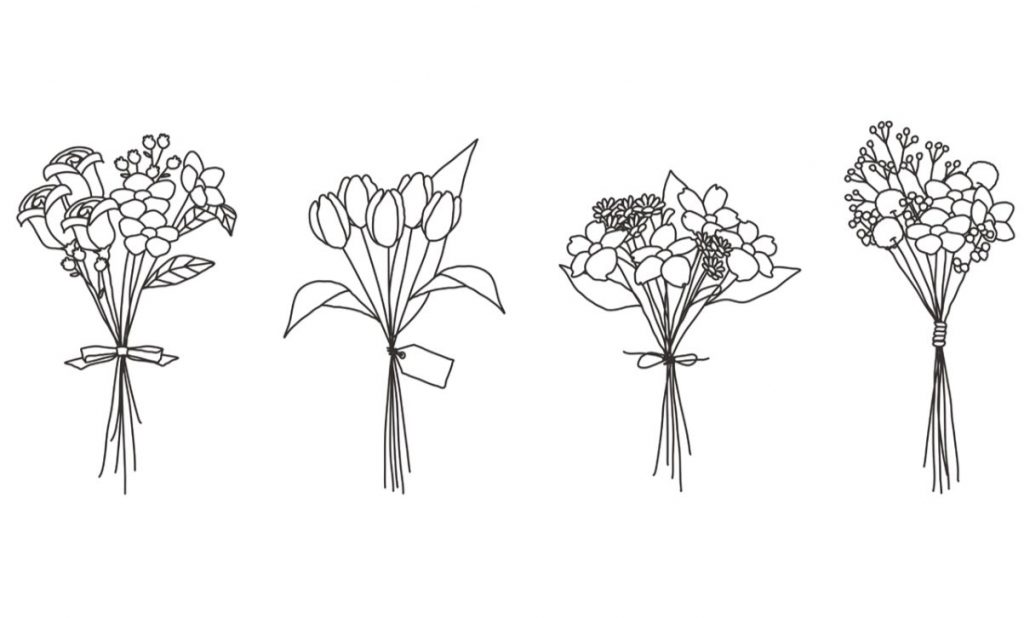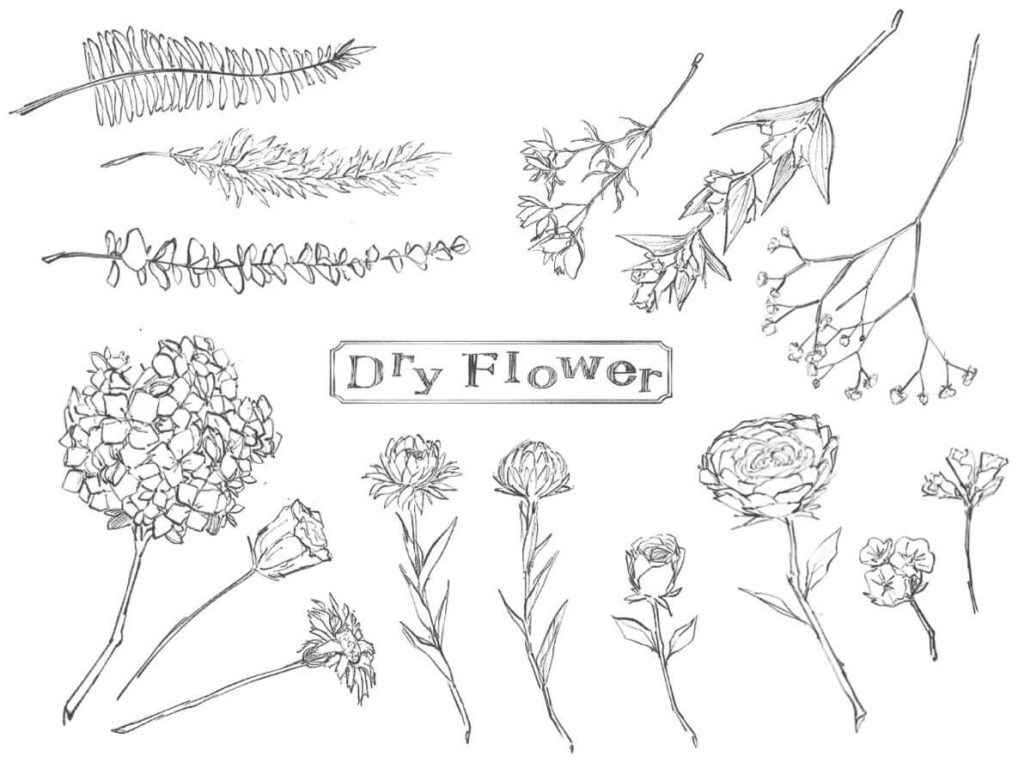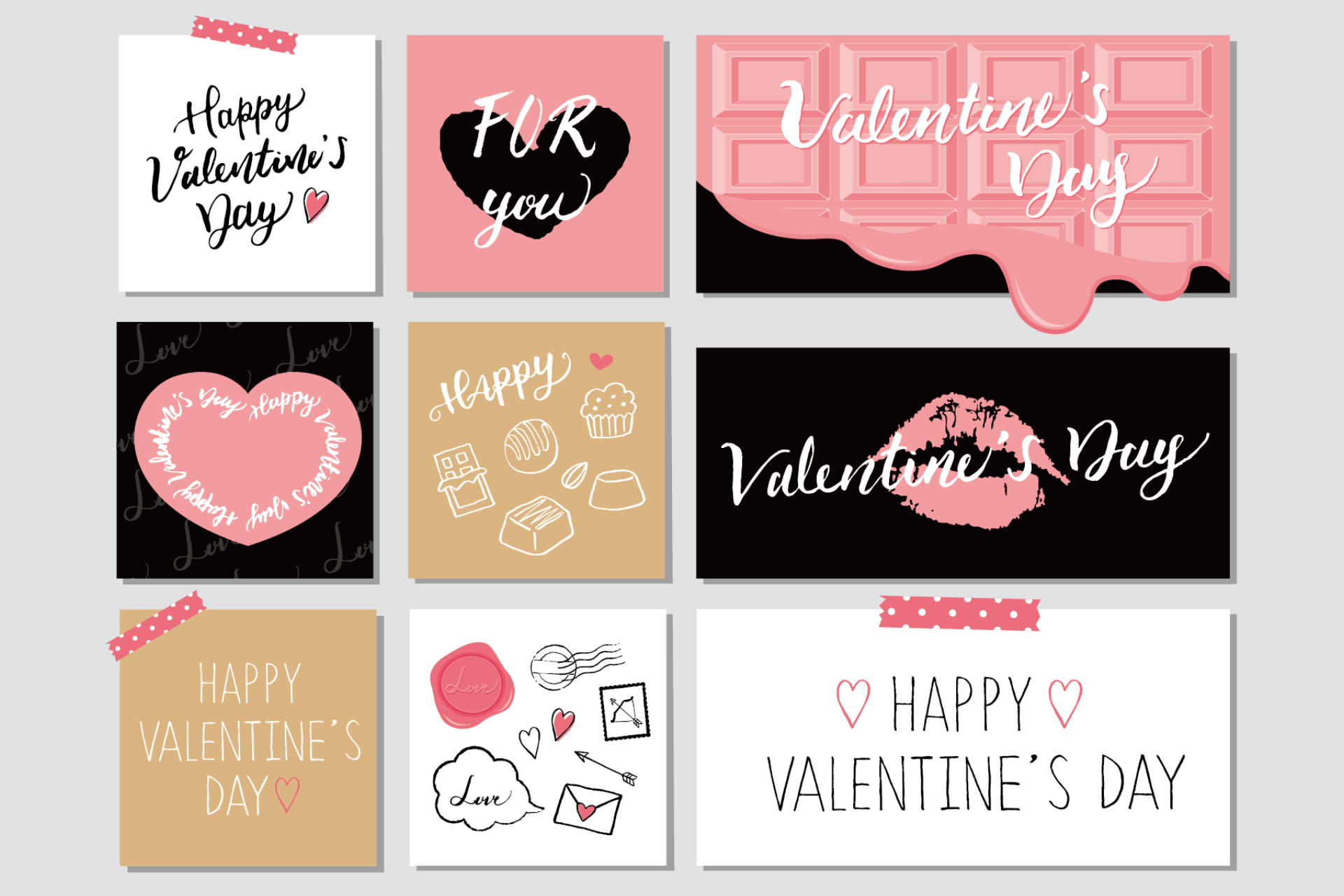You might be wondering what exactly flower line drawing vectors are. Flower line drawing vectors are great for creating custom designs for your projects. With just a few simple shapes, you can make a lot of different floral drawings. And with the right color combinations, you can even go from cute to eye-catching in no time at all.
This blog talks about the lines used in vector art—drawings made with only straight lines and geometric shapes. This art is usually done digitally because it’s easier to create a clean line drawing this way. But your computer doesn’t have to be involved in getting an excellent result! It is all about practice and your skills.
Flower line drawing vectors are always a great way to bring a little freshness and color into any design. Whether it’s a single flower or an entire garden, they can be used in any design to add a bit of character. We’ve got beautiful floral vector graphics for you to use in your next project, including everything from tulips to roses and more. Before we dive into seeing more examples, let us first familiarize ourselves with one-line art.
Basic of One-line art
One-line art is the use of a continuous line to create an image. It’s a technique that’s been used for thousands of years in cultures all over the world, and it’s still being used today.
What is one-line art?
One-line drawings are some of the most exciting and simple art forms. Unfortunately, artists who don’t quite grasp their simplicity often overlook them.
The drawing itself simplifies the complex world around us and focuses your mind on the subject matter. It’s a great way to practice simple shapes and basic shading techniques.
One-line drawings come in many varieties, each unique to their creator. Some will use several lines, while others will only use one. Some artists fill their pictures with color, while others leave them black and white. Some focus on the object’s shape, while others may choose an abstract style. Regardless of how they’re made, all one-line drawings have a fantastic amount of character and charm—no matter your level of artistic skill!
There are many different kinds of one-line drawings, with each artist having their specific characteristics:
-Some artists like to focus on single objects or people, while others focus on landscapes or abstract shapes
-Some start at the top and end at the bottom of the page, while others use up and down lines to draw waves or other natural elements
-Some use just one line that never leaves the page, but many use multiple lines that cross over each other in various ways
The Magic behind the One line art drawing
The idea behind this particular type of drawing is pretty simple: using a single line, an artist illustrates an entire scene. The Magic is in the details. If done well, it’s as if you can walk right into the picture and explore what you see.
One-line drawings come in all shapes and sizes, with the artist’s goal to determine how they are completed. Some use only one line, while others use many more strings to create their scene. And some artists don’t limit themselves to just one single line; they use several lines instead so that their drawings are still technically single-line drawings but also multi-line drawings at the same time!
Outlining is the first step to any one-line art drawing, whether a doodle or an illustration. It’s essential to create a clean line and remember that if you mess up, you can erase and start again. Practice makes perfect!
Types of lines in One-line art drawing
Actual Line – This is a natural line that you can see physically.
Implied Lines – these are the lines you can only see in your mind.
Geometric Lines – are usually made up of straight angles or curves that form precise shapes, making them a good choice if your design has an accurate aesthetic that needs to be emphasized. Geometric designs are timeless: the same primary conditions have been used for centuries in art and architecture.
Now, there are many different types of geometric lines. Some of the best examples are shown below:
- Vertical lines: vertical lines run upright, perpendicular to the ground or other surface they’re drawn onto.
- Horizontal lines: horizontal lines run parallel with the ground or other surface they’re drawn onto
- Diagonal lines: diagonal lines intersect each other at an angle (usually between 0° and 90°)
- Parallelogram: parallelograms have four sides with two pairs of parallel sides
Organic Lines– Organic forms are more widespread—think of a snake, a vine, or even a human being. They’re different from geometric shapes because organic lines feature curves rather than straight lines.
The first step in creating organic lines is to find an organic object that inspires you, such as a flower or leaves you see in your garden.
Once you’ve found your organic object, use one of these two methods to create a drawing:
- Trace the object and adjust it to look more like a line than a blob. For example, if your original object was a leaf, you can trace it and make it look more like a stem with the addition of a few simple lines.
- Copy your sketch exactly onto another piece of paper and trace over the lines, but don’t be afraid to add some details of your own!
- Once you have your finished drawing, you can use these tips for shading:
- Draw some curved lines over the top of your sketch in different directions and with varying pressure to create shading.
- Use different shades of pencil for other areas of shading. For example, use a lighter shade for areas with lots of light and a darker shade for shadows and crevices between the leaves on your plant.
Practice Makes Perfect


However, as seemingly simplistic as line art drawings are, they can still feel overwhelming to figure out when, where, and how to start. Indeed, the key to improving your line art drawing abilities is to go for it.
What you’ll want to do is get your digital iPad and stylus that feels good in your hand (and one that won’t make too many marks), and then start doodling. Don’t worry about erasing anything while you’re doing this—your goal is not to create a finished product; it’s just to keep your hand moving so that you can get used to this new style of drawing. The sooner you get into your flow, the sooner you can start seeing what works and what doesn’t—and then you can go from there!]
There are also a few easy line art drawing exercises that you can start with:
Blind Contour Drawing
Blind contour line drawings are a fun way to improve your artistic observational skills and hand-eye coordination. You can do them on a sheet of paper or simply by looking out the window or across a room, but the point is that you don’t look down at your Ipad while drawing. You draw lines and shapes as you see them. It’s a 3D version of connect-the-dots because you have to imagine what’s in between the lines you’re removing. If you’re having trouble visualizing, try drawing something more familiar, like flowers or an animal. The goal is to train your brain to see lines and shapes rather than specific objects.
Gesture Drawing
If you want to learn how to draw objects, you have to do it in a way that engages your whole mind, not just your eyes. And there’s no better way to do this than through gesture drawing—a time-honored technique that helps you learn to envision objects as three-dimensional forms.
Gesture drawing is perfect for sketching out a flower and getting outside yourself to focus on an object in front of you.
Gesture drawing is about interpreting what you see quickly instead of striving for perfection. It gives you practice interpreting your surroundings with quick, expressive lines that capture the essence of your subject.
Continuous Line Drawing
Continuous line drawing is one of the most common types of illustration. As its name suggests, a straight line drawing is completed without lifting your pen or pencil from the paper. It’s also called a contour drawing and can create both simple and complex drawings.
Continuous line drawings are great if you want to draw an object in three dimensions quickly and clearly. This type of illustration also comes in handy when you’re working on subjects like botany or zoology and need to show off an object’s three-dimensional shape or structure accurately (or if you’re trying to depict 3D modeling in a 2D space).
In terms of their visual impact, continuous line drawings aren’t always the most captivating type of illustration out there; but they are very effective for outlining objects quickly using few lines and minimal detail.
What Makes Flower Line Drawings Special?
Flower line drawings are a great way to add some extra flair to your design. They can make any design more lively and fresh-looking, which can be a nice change of pace from the usual visuals we see in web and print media. What makes this more incredible is that it can be used in almost any season. Whether it’s summer, spring, or fall, there is always an appropriate design of flower that can best suit your projects.
Flower line drawings come in a variety of styles, so you can choose one that matches the aesthetic of your project perfectly. You can find flower line drawings that are simple, bold, and symmetrical, or you can opt for something more complex and textured.
These days, many people like to use flower line drawings to add some color and life to their designs. Flower illustrations can be used as accents or as a primary focal point for your project’s visual style.
Now Let’s Make a Pretty Flower Line Drawing Vectors.
I’m here to show you how to draw a flower using one of my favorite techniques—line art. It’s a super easy method that turns simple shapes into gorgeous flowers in just easy steps!
Step 1: Start by outlining your flower petals. This is the base of your flower and the structure that will hold it up once you start adding colors. It’s okay if it looks kind of shaky or weird. You can always go back and fix it after adding the next step.
Step 2: Draw a base layer on your Illustrator. Draw a shape using the pen tool to create curves that look pretty natural, but you could also use the rectangle tool and make a square or triangle instead!
Step 3: Next, add some shading to your petals using varying types of lines with varying thicknesses. This creates some shadows and highlights on your petals, adding dimension and giving them more visual interest! The thicker the line, the darker it will be; conversely, thinner lines will create lighter spots on your petals.
Step 4: Finish it with a good choice, whether you want to retain its black and white features or add some colors to your flower line vectors. Usually, we often see it in a minimalist style but adding some pleasing tone to your drawing is also a good option for you to try.
Free Flower Line Drawing Vectors for you to Download
Let us boost your creative juices by showing you some free flower line drawing vectors to download from illustAC so you can use them as your inspiration. We all know that sometimes when you’re trying to develop a great design, it can be hard to find the right combination of ideas. And that’s where these vectors for you to download come in. You’ll have everything you need to create stunning designs with our flower vectors.


Bottom Line
Line art drawing is a seemingly simplistic art form, but it can feel a little intimidating to someone who hasn’t tried their hand at it before. From choosing the right tools to understanding the rules of proportion and point of view, there are a lot of factors that go into line art drawing.
When you first start looking at line art drawings, it may be difficult to grasp how that simple black-and-white outline can look so beautiful. The key to mastering this art form is just going for it.
The most important thing to remember about line art drawings is that they are all about personal expression. It takes time and experience to build up your skills with this artistic medium, and you will mess up (we promise you!). But don’t let that stop you from getting started!








